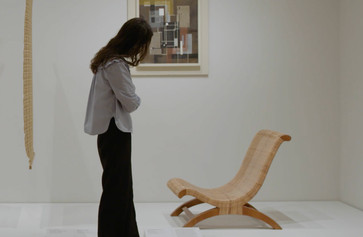Latin American Cities in Motion, 1940 to 1980
Watch archival footage from six bustling centers of design and architecture.
Amanda Forment
Mar 19, 2024
From the lofty vantage point of a cable car, one gazes on the picturesque expanse of Rio de Janeiro, where the iconic Sugar Loaf Mountain stands sentinel amid a backdrop of blue seas. In Mexico City, the murals of Juan O’Gorman at UNAM (National Autonomous University of Mexico) speak to the rich tapestry of cultural heritage that defines the metropolis. Meanwhile, Buenos Aires pulsates with energy, its bustling streets anchored by the imposing obelisk, a symbol of urban dynamism. Santiago, nestled against the dramatic backdrop of the Andes, epitomizes the fusion of natural splendor and everyday life. Bogotá exudes sophistication, its streets a runway for chic fashion, while Caracas offers a compelling tableau of sights and sounds.
During the period spanning from 1940 to 1980, Latin American cities thrived as centers of bustling energy and continual expansion. In some urban centers, layers of history coexist seamlessly, from pre-Columbian roots to colonial legacies and modern aspirations. Amid this backdrop, Crafting Modernity: Design in Latin America, 1940–1980 sheds light on the domestic sphere, revealing how homes served as both a microcosm and a laboratory for the larger political, cultural, and economic transformations of the era. This video offers a glimpse into the diverse ways of life that flourished within Latin American cities during this dynamic period, as past and present meld in a symphony of progress and possibility.
Crafting Modernity: Design in Latin America, 1940–1980 is on view at MoMA through September 22.
Related articles
-

Trailblazing Women Designers in Latin America
Meet 10 innovative artists who shaped how we live with modern design.
Amanda Forment, Ana Elena Mallet
Mar 14, 2024
-

UNIQLO ArtSpeaks
Anna Burckhardt on Clara Porset’s Butaque Chair
A Cuban artist working in Mexico, Porset incorporated Mexican craft traditions into her signature design.
Nov 12, 2021

